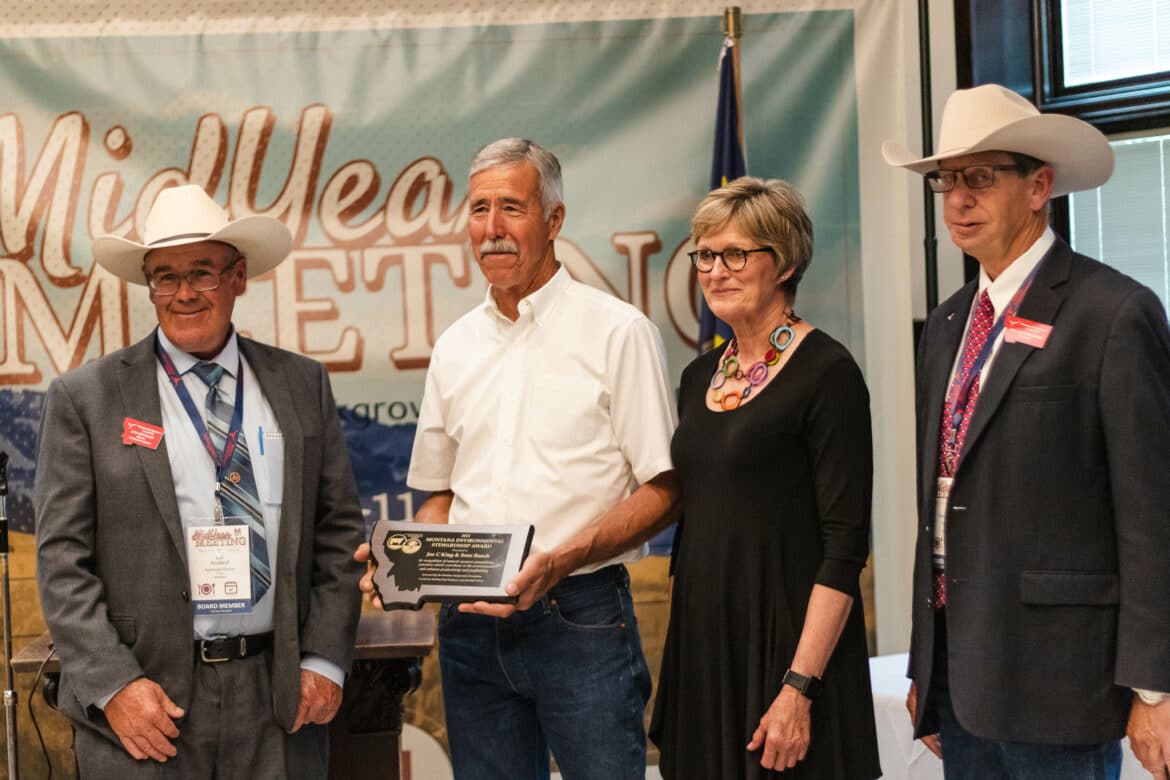HOUSTON, Texas – The Joe C King & Sons Ranch, in Winnett, Mont., has been selected as one of seven regional honorees of the Environmental Stewardship Award Program (ESAP). The award, announced during the 2022 Cattle Industry Convention and NBCA Trade Show, recognizes the operation’s outstanding stewardship and conservation efforts. Regional winners will compete for the national award, which will be announced later this year.
Now in its 30th year, the Environmental Stewardship Award has annually recognized the outstanding stewardship practices and conservation achievements of U.S. cattle producers from across the nation. Regional and national award winners have been commended for their commitment to protecting the environment and improving fish and wildlife habitats while operating profitable cattle operations.
“I don’t think there is anyone better suited to receive this award than Chris King and his family. Their goals for success are built upon adapting to the unique local conditions and environment, while assessing the health of the land, water and forage, to make sound business decisions,” said Jim Steinbeisser, MSGA President. “Their improvements have allowed them to do what any rancher wants from their operation – to withstand difficult conditions and flourish in favorable ones.”
Joe C King & Sons Ranch is owned and operated by Chris & Gari King, their son, Jay King, and their daughter and son-in-law, Kylie and Mitch Thompson. The King family has been operating on the ranch since 1941.
The King family has continued the strong tradition of the Joe C King & Sons Ranch by becoming an ever-evolving enterprise, willing to learn and adjust as the years pass. For the last 50 years, continuously improving grazing management has been a fundamental key in the ranch’s sustainability efforts.
Joe King, Chris’s father, started those efforts in the 1970s when he sectioned off the ranch into five pastures to begin a rest-rotation grazing program. Chris and Jay have now implemented a deferred grazing system that they believe benefits the landscape, cattle, wildlife even more.
“We have always felt that we saw significant improvements in our range quality that we attribute to our rotational grazing systems as opposed to season-long grazing in common that we had before,” said Chris.
Implementing a thoughtful and managed grazing system that rotates animals on a regular frequency allows plants to develop deeper roots, recover from grazing faster, and ultimately produce far more grass over the course of the season. This means the soil can store more carbon, allow for water to seep into the soil, and prevent run-off.
Since 2018, the ranch has taken part in the Bureau of Land Management’s pilot initiative known as Outcome-Based Grazing Authorizations (OBGAs). The eleven ranches selected as demonstration projects span six states and will be used when crafting guidance and best management practices for future grazing authorizations.
The ranch also has a very active and healthy population of Sage Grouse that enjoy the sagebrush prairie habitat cattle grazing provides. Additionally, the area is home to pronghorn, deer, and various birds including songbirds, pheasants, sharp-tail grouse, hawks, eagles and other birds of prey.
###
MSGA


